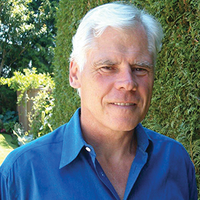
TIAC’s Best Practices Guide was developed in 2010 and has been a fundamental part of the mechanical industry’s growth, success, and commitment to quality. It provides information—mainly for contractors, but pertaining to the mechanical insulation industry in general—on various topics, including commercial and industrial applications, insulation codes, standard practices, and system design basics. It has been a go-to resource for professionals, offering checklists and essential information that can help streamline estimating processes and improve project accuracy and overall quality.
Although the Guide continues to function as a valued resource, codes and practices have evolved since its inception, so TIAC’s technical committee is in the process of a redesign and update. Cory Gray, chair of the technical committee, is leading the charge on the update, and committee members have been tasked with incorporating the latest insights and advancements.
“Our technical committee is hard at work with updates, and we’ve got some exciting changes in the pipeline,” Gray says. “First off, I want to give credit to my predecessors for their fantastic work on the Guide. They really set the bar high, and we’re committed to maintaining that standard while adding some fresh ideas.”
The overarching goal of the project is to help contractors, industry stakeholders, and asset owners maintain the quality of insulation systems by making the Guide more effective with the most contemporary insights and information.
The committee’s goals include giving the Guide a design facelift to make it look and feel more modern and revising the language to make it a bit clearer and easier to understand.
“We are also adding new sections to tackle some issues and pain points our members have been talking about,” Gray says. “We can’t reveal those now, but we will be able to share more after our meeting with the board in August.”
The update also includes ensuring the latest technologies and jargon are included, and some new ideas that are still under development.
“Not everything makes it off the cutting room floor,” Gray says. “Something like this requires the committee to put ideas together and then present them to TIAC. Then, we will take feedback and move forward. It’s a lot of effort but we have a great team working on this, and we look forward to having something to show in the near future.”
Once the revisions are complete, the TIAC Best Practices Guide will be available to members through the TIAC website. ▪


